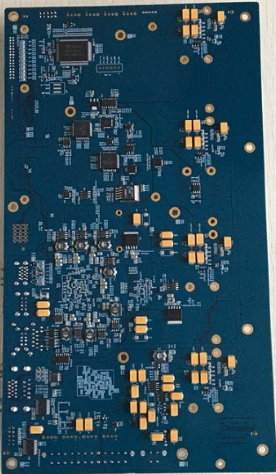Analysis of changes in solder paste, an important material of SMT? In the era of mobile Internet, smart phones are hot, and products with higher performance and thin appearance are more popular. The miniaturization and thinning of electronic equipment represented by smart phones and wearable electronic products in the SMT industry has become a future trend. On the one hand, the chip and miniaturization of electronic components are developing rapidly, and on the other hand, the corresponding material technology is also continuous Innovative, electronic equipment is constantly changing.
The simplest and most intuitive way to achieve miniaturization, lightness and thinness is to use smaller electronic components. At present, SMT (Surface Mounted Technology), the most popular surface mount technology in the electronic assembly industry, provides good technical support and guarantee for the assembly of SMT components whose volume and weight are only about 1/10 of the traditional plug-in components.
After adopting SMT, the volume of electronic products is reduced by 40%~60%, and the weight is reduced by 60%~80%. At the same time, SMT also has the advantages of high reliability, low solder joint defect rate, good high-frequency characteristics, reduced electromagnetic and radio frequency interference, easy automation, improved production efficiency, and reduced costs by 30% to 50%.

SMT refers to printing and coating solder paste on PCB pads, and accurately placing surface mount components on the solder paste-coated pads, heating the circuit board according to a specific reflow temperature profile, and melting the solder paste, Its alloy composition is cooled and solidified to form solder joints between the components and the printed circuit board to realize the metallurgical connection technology.
Solder paste, also called solder paste, is a creamy mixture by mixing solder powder, flux and other additives. The solder paste has a certain degree of stiffness at room temperature, which can initially bond the electronic components to the predetermined position. At the soldering temperature, with the volatilization of the solvent and some additives, the soldered components and the printed circuit pads will be soldered together Form a permanent connection.
As an important material in SMT technology, solder paste has its characteristics including composition, use, and preservation. The composition of lead-free solder paste is mainly composed of tin/silver/copper, and silver and copper replace the original lead composition. In the PCB assembly using surface mount components, to obtain high-quality solder joints, an optimized reflow temperature profile is required. Regarding the storage and use of solder paste, first of all, the storage of solder paste should be controlled at 0-10 degree Celsius; the service life of solder paste is 6 months (unopened); it should not be placed in the sun.
Secondly, the temperature of the solder paste must be raised to the ambient temperature (25±2 degree Celsius) before unpacking, and the reheating time is about 3-4 hours, and it is forbidden to use other heaters to increase the temperature instantly; it must be fully heated after reheating For mixing, the mixing time of the mixer is 1-3 minutes, depending on the type of the mixer. Finally, use solder paste according to the specific conditions of use.
Although SMT technology greatly improves efficiency and saves costs, through the introduction, we can find that the storage and use of solder paste is not convenient. One of the most important points is that it needs to be stored in an environment of 0-10°C, which puts forward higher requirements for transportation, and manufacturers have to increase the investment in purchasing refrigerators and other related equipment.